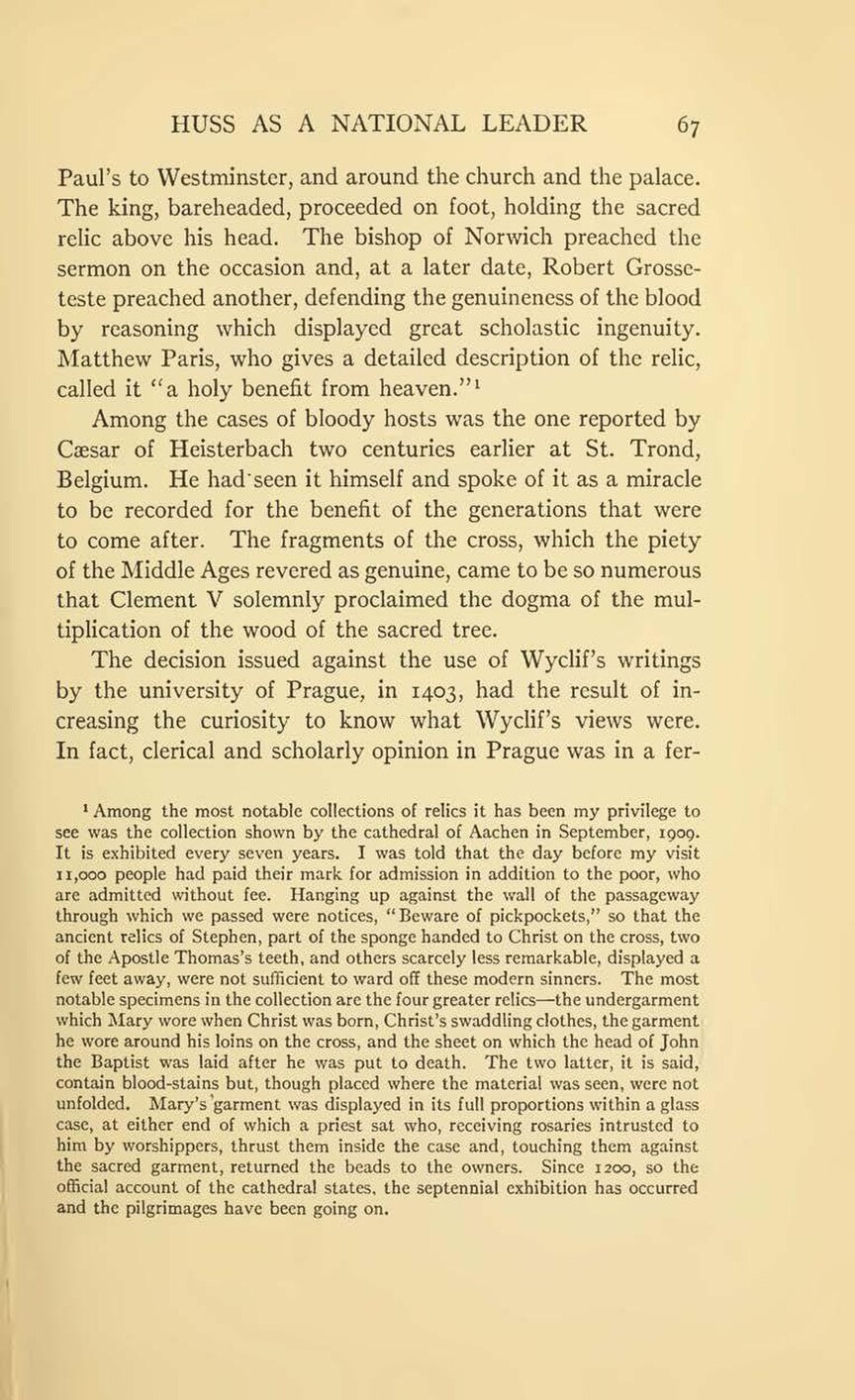Paul’s to Westminster, and around the church and the palace. The king, bareheaded, proceeded on foot, holding the sacred relic above his head. The bishop of Norwich preached the sermon on the occasion and, at a later date, Robert Grosseteste preached another, defending the genuineness of the blood by reasoning which displayed great scholastic ingenuity. Matthew Paris, who gives a detailed description of the relic, called it “a holy benefit from heaven.”[1]
Among the cases of bloody hosts was the one reported by Cæsar of Heisterbach two centuries earlier at St. Trond, Belgium. He had seen it himself and spoke of it as a miracle to be recorded for the benefit of the generations that were to come after. The fragments of the cross, which the piety of the Middle Ages revered as genuine, came to be so numerous that Clement V solemnly proclaimed the dogma of the multiplication of the wood of the sacred tree.
The decision issued against the use of Wyclif’s writings by the university of Prague, in 1403, had the result of increasing the curiosity to know what Wyclif’s views were. In fact, clerical and scholarly opinion in Prague was in a fer-
- ↑ Among the most notable collections of relics it has been my privilege to see was the collection shown by the cathedral of Aachen in September, 1909. It is exhibited every seven years. I was told that the day before my visit 11,000 people had paid their mark for admission in addition to the poor, who are admitted without fee. Hanging up against the wall of the passageway through which we passed were notices, “Beware of pickpockets,” so that the ancient relics of Stephen, part of the sponge handed to Christ on the cross, two of the Apostle Thomas’s teeth, and others scarcely less remarkable, displayed a few feet away, were not sufficient to ward off these modern sinners. The most notable specimens in the collection are the four greater relics—the undergarment which Mary wore when Christ was born, Christ’s swaddling clothes, the garment he wore around his loins on the cross, and the sheet on which the head of John the Baptist was laid after he was put to death. The two latter, it is said, contain blood-stains but, though placed where the material was seen, were not unfolded. Mary’s garment was displayed in its full proportions within a glass case, at either end of which a priest sat who, receiving rosaries intrusted to him by worshippers, thrust them inside the case and, touching them against the sacred garment, returned the beads to the owners. Since 1200, so the official account of the cathedral states, the septennial exhibition has occurred and the pilgrimages have been going on.
